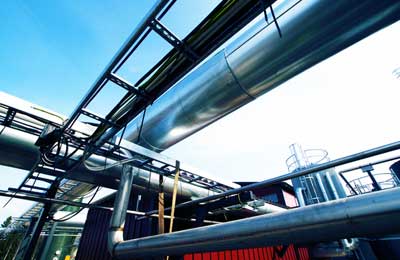
Non-oil sector drives GCC GDP growth
Doha, January 13, 2013
The non-oil industry in GCC grew strongly in 2012 as investment in major manufacturing projects, particularly petrochemicals, boosted output, a report said.
Real GDP growth in the GCC is likely to have slowed from 7.8 per cent in 2011 to an estimated 5.7 per cent in 2012, according to the report release by the Qatar National Bank (QNB) Group, one of the largest banks in the Mena region. This remains a relatively high rate of growth compared with many other countries in the current challenging global economic and financial environment, the report pointed out.
In 2012, oil prices remained at historically high levels, boosting government revenue and spending, which, in turn, boosts growth across non-oil industrial and services sectors, QNB said in the report.
Around 22 per cent of government spending is capital expenditure, mainly on infrastructure in transport, real estate, education and healthcare sectors. Government spending, therefore, supports non-oil sectors such as construction and utilities.
The remaining 78 per cent of government spending is current expenditure, mainly on government wages and other public services. This provides an injection of income into the GCC non-oil economy, driving growth in services and retail trade.
Rising oil production was also an important factor driving growth in 2012, the report said.
Total GCC oil production reached 17.2 million barrels per day, on average, in the first three quarters of 2012, 6.2 per cent higher than in 2011. Higher oil production came as Opec removed its production quotas for individual countries.
The quotas had initially been put in place in 2009 when oil prices crashed, but were replaced in 2012 with a more relaxed aggregate production target for all Opec members. Opec also ramped up production in 2011-12 to calm oil markets as concerns grew about lower output in countries such as Libya (due to the Arab Spring) and Iran (due to sanctions).
Overall, despite historically high oil prices and rising oil production, strong growth in the non-oil GCC economy has sustained its share in total GDP at around 50 per cent in 2012, the report said.
QNB Group estimates that total nominal GDP in the GCC was $1.56 trillion in 2012, or 2.2 per cent of global GDP.
Saudi Arabia is the largest GCC economy, accounting for around 47 per cent of the region’s GDP. The oil sector has underpinned the Saudi economy with production averaging 9.8 million barrels per day in the first three quarters of 2012, up from an average of 9.3 million in 2011.
Real growth was even stronger in the Saudi non-oil sector in 2012 at 7.2 per cent. Ongoing major investment projects have supported growth in sectors such as construction, which expanded by 10.3 per cent in 2012.
The UAE is the second largest economy in the GCC, accounting for 23 per cent of GDP. UAE real GDP growth for 2012 is estimated at 4.0 per cent in the IMF’s most recent Middle East regional economic outlook. Oil production was 3.2 per cent higher in the first three quarters of 2012 than in the same period of 2011.
Qatar is the third largest economy in the GCC, accounting for 12 per cent of regional GDP. There has been a slowdown in real GDP growth as the State’s rapid liquefied natural gas expansion programme has peaked and further expansion has been put on hold, for the time being.
However, growth is still strong at 6.1 per cent in 2012 due to the non-oil sector, the report said. The non-oil industrial and services sectors are estimated to have exhibited strong growth of 10.1 per cent and 9.1 per cent respectively, according to QNB Group. This compares to just 2.1 per cent for the oil and gas sector.
Kuwait accounts for 11 per cent of GDP in the GCC. GDP growth is estimated at 6.3 per cent in 2012, driven mainly by a 12.1 per cent increase in oil production to an average of 3 million barrels per day in the first nine months of 2012. Non-oil growth should also be strong, supported by spending on projects.
The 2012/13 budget amounted to $75 billion, a 9.3 per cent increase on the previous budget, although bureaucratic constraints can lead to actual spending coming in below budget, particularly for capital expenditure.
Growth in Oman, which accounts for 5 per cent of GDP in the GCC, was forecast to remain relatively steady at around 5.0 per cent, according to the IMF, driven by gently rising oil production and major expansions in the petrochemical sector. A recent statement from the country’s Minister of Finance, however, put 2012 real GDP growth even higher at 8.3 per cent.
Finally, growth in Bahrain, which accounts for 2 per cent of GDP in the GCC, was forecast by the IMF to have been just 2 per cent in 2012. Bahrain’s economy is more diversified than the rest of the GCC as it has a strong services-oriented non-oil sector (financial services account for 18 per cent of GDP) and relatively limited oil reserves.
Strong investment into non-oil industries across the GCC, including production of petrochemicals, fertilisers, steel and aluminium will continue to support non-oil growth. Therefore, QNB Group expects GDP growth in the GCC growth to stabilise at around 5 per cent-6 per cent in 2013-14. – TradeArabia News Service







